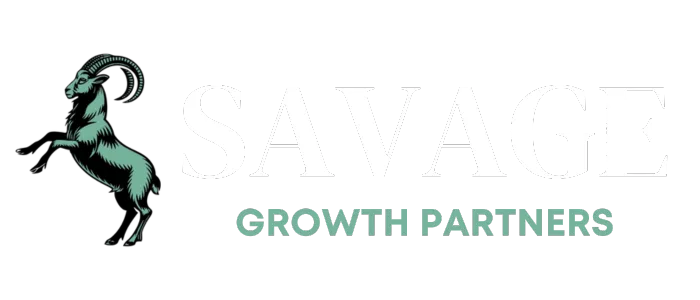Jensen Savage Featured on the She Built It® Podcast
When I took the leap into entrepreneurship, it felt like standing at the edge of a diving board, surveying vast waters below. It was exhilarating yet terrifying, and like many, I grappled with the illusion of safety that a traditional job provided. But as I began this journey, I realized that the real safety net lies in building something of my own—something I could control. Join me as I recount experiences that shaped my understanding of risk, growth, and the indispensable mindset shifts necessary for success.
Reframing the Safety Net: Job vs. Entrepreneurship
When we think about job security, what comes to mind? A steady paycheck? Benefits? Many people cling to the idea that traditional employment offers safety. But is that really true? Let’s explore the myth of job security and why it might be time to rethink our definitions.
The Myth of Job Security
We often believe that a stable job equals safety. However, this notion is often overstated. In reality, traditional jobs can be precarious. Companies can downsize, restructure, or even eliminate positions without warning. Have you ever heard of someone being laid off unexpectedly? It happens more often than we think.
Job loss can occur at any moment.
Dependence on a single employer can be risky.
The illusion of safety can prevent us from pursuing our passions.
As I reflect on my own journey, I realize that the true risk lies in relying on someone else for my livelihood. I’ve come to believe that
It's actually safer for me to build my own thing that I own.
This mindset has guided me through various career transitions, from corporate roles to entrepreneurship.
Real-Life Impacts of Owning Your Business
Owning a business provides a unique sense of control. I can make decisions that directly impact my success. This autonomy is liberating. It allows me to shape my future rather than leave it in someone else’s hands.
Consider the benefits of entrepreneurship:
Flexibility in decision-making.
The ability to pivot quickly in response to market changes.
A direct correlation between effort and reward.
When I took the leap into entrepreneurship, I discovered a world where my efforts directly influenced my outcomes. It’s exhilarating and daunting at the same time. But isn’t that what true independence feels like?
A Fusion of Risks and Rewards
Entrepreneurship is not without its challenges. There’s a delicate balance between risk and reward. However, this fusion is what makes the journey worthwhile. Each setback teaches us valuable lessons. Each success builds our confidence.
In the world of business, we must embrace the unknown. Fear of failure often holds us back. But what if we viewed failures as stepping stones? What if we accepted that setbacks are part of the process? The faster we can test, learn, and pivot, the more likely we are to succeed.
As I navigate my entrepreneurial path, I’ve learned to delegate tasks and focus on what truly matters—growing my business. This shift allows me to prioritize effectively and manage the growing pains that come with success.
Ultimately, I believe that building my own business is more secure than a traditional job. The control it offers is invaluable. So, let’s challenge the conventional wisdom about job security and embrace the opportunities that entrepreneurship brings.
Mindset Matters: From Scarcity to Abundance
Have you ever felt stuck? Like you’re trapped in a cycle of self-doubt? I know I have. Shifting from a scarcity mindset to an abundance mindset can be a game-changer. It opens doors to opportunities we never thought possible. But what does that really mean?
The Significance of Shifting Mindsets
When we cling to a scarcity mindset, we limit our potential. We think there’s only so much success to go around. But what if we flipped that idea on its head? What if we embraced the belief that there’s enough for everyone? This shift can radically transform our lives and businesses.
It encourages us to take risks.
It fosters creativity and innovation.
It builds resilience in the face of challenges.
Take it from me: embracing abundance has been a pivotal part of my journey. I once believed that my corporate job was the safest route. But I realized that true security comes from being my own boss. I’ll never fire myself! This realization pushed me to start my own business, where I could control my destiny.
Personal Stories of Overcoming Limitations
Let’s talk about real stories. I remember a time when I felt unworthy of success. I thought, “Why would anyone want to listen to me?” But then I asked myself,
“Why not me?”
That question sparked a fire within me. It made me realize that I had just as much right to succeed as anyone else.
Many entrepreneurs face similar battles. They impose limits on themselves, fearing they’re not good enough. But the truth is, we all have unique stories and experiences that can inspire others. Sharing these stories can create connections and build a supportive community.
Tools and Techniques for Reframing Your Thinking
So, how do we shift our mindset? Here are some effective tools and techniques:
Practice Gratitude: Start each day by listing things you’re grateful for. This simple act can shift your focus from what you lack to what you have.
Surround Yourself with Support: Your social circle matters. Engage with people who uplift you. Their positive energy can help you break free from limiting beliefs.
Set Realistic Goals: Break your larger goals into smaller, achievable steps. Celebrate each victory, no matter how small.
Community support is crucial. I’ve learned that sharing my journey with others not only helps me but also inspires them. When we lift each other up, we create an environment where everyone can thrive.
Remember, shifting from scarcity to abundance is a journey. It takes time and practice. But the rewards are worth it. Embrace the mindset that welcomes opportunities. Let go of the fear of failure. After all, every setback is just a stepping stone toward success.
The Power of Marketing: Transforming Businesses Through Connection
Marketing is more than just selling a product. It’s about telling a story. It’s about connecting with your audience on a deeper level. Effective marketing involves storytelling and addressing customer pain points. When we can tap into what our customers truly feel, we create a bond that goes beyond transactions.
Why Storytelling Matters
Have you ever noticed how some brands stick with you? They don’t just sell; they resonate. They understand your struggles. They speak your language. This is the essence of storytelling in marketing. It’s about creating a narrative that reflects the customer’s journey.
Effective marketing involves storytelling and connecting with customer pain points.
Successful campaigns highlight transformation over mere pricing incentives.
Examples of powerful marketing campaigns that made a difference, particularly in service-based businesses.
Take, for instance, the campaign we ran for a fitness company titled Fit After Fifty. This initiative focused on middle-aged women facing challenges like bone density issues. By addressing their specific needs, the campaign created a strong emotional connection. It wasn’t just about fitness; it was about empowerment, wellbeing, and happiness. This is what we mean by transformation. It’s not just a discount or a flashy ad. It’s about real change.
The Impact of Transformation
When we shift our focus from pricing to transformation, we see incredible results.
“Demonstrating that transformational value is key to successful campaigns.”
This quote encapsulates the essence of what we’re discussing. It’s not just about numbers; it’s about the value we provide. When we highlight the transformation our services can bring, we foster community engagement. We offer real help that aligns with the desires of our clients.
Building Customer Loyalty
Storytelling in marketing also reinforces customer loyalty. When customers feel understood, they are more likely to return. They become advocates for your brand. This is where the magic happens. We create a community around our brand, and that community drives growth.
So, how do we achieve this? It starts with understanding our audience. What are their pain points? What transformations do they seek? When we answer these questions, we can craft compelling narratives that resonate.
In conclusion, the power of marketing lies in our ability to connect emotionally with our customers. By focusing on transformation and storytelling, we can achieve incredible growth. It’s not just about selling; it’s about creating lasting relationships. And that, my friends, is the true power of marketing.
Navigating Growth: Scaling Challenges and Solutions
As we embark on the journey of scaling our businesses, we must be prepared for the challenges that lie ahead. Growth can be exhilarating, but it often comes with its own set of obstacles. So, how do we anticipate these hurdles and adapt our strategies effectively?
Anticipating Obstacles
First, let's talk about the importance of anticipating obstacles. Every entrepreneur knows that growth isn’t a straight path. It’s filled with twists and turns. We need to be ready to pivot when things don’t go as planned. For instance, when I first started my business, I faced unexpected challenges that forced me to rethink my approach. I learned that being proactive rather than reactive is key. What if we could foresee potential issues before they arise? Wouldn’t that be a game changer?
The Role of Delegation
Next, let’s dive into delegation. This is a crucial element of scalability. As our businesses grow, we can’t do everything ourselves. Trust me, I’ve tried, and it’s exhausting! By identifying revenue-driving tasks and delegating others, we can focus on what truly matters. This shift allows us to manage our time better and increases overall productivity. Think of it this way: if you’re the captain of a ship, you can’t steer the vessel and hoist the sails at the same time. You need a crew!
Real-Life Examples
Now, let’s look at some real-life examples. I once worked with a job training service that was stuck at around $6,000 in monthly revenue. After partnering with an expert, we implemented targeted advertising strategies. As a result, we made an astounding leap to $36,000 in just the first month! This experience highlighted the growing pains that many successful businesses face. It’s not just about the numbers; it’s about adapting to rapid changes.
As I said in the episode,
“Rolling with the punches and solving problems as they come along is crucial.”
This mindset is essential for any entrepreneur. It’s about embracing change and being willing to learn from every experience.
Embracing Change
Finally, let’s discuss the importance of embracing change. Growth brings opportunities, but it also requires a readiness to adapt. We must challenge our perceptions of job security and recognize that true safety lies in our ability to control our destinies. When I made the leap into entrepreneurship, I realized that I was no longer at the mercy of a boss. I was in charge of my own fate.
In conclusion, navigating growth is a journey filled with challenges and opportunities. By anticipating obstacles, delegating effectively, and embracing change, we can scale our businesses successfully. Remember, the path may be rocky, but with the right strategies, we can turn those challenges into stepping stones for success.
Embracing AI: Tools for Today’s Entrepreneurs
As an entrepreneur, I’ve seen firsthand how artificial intelligence (AI) can revolutionize business operations. But let’s be real: AI isn’t a magic wand. It enhances our work, but it still needs that essential human touch. So, how can we leverage AI effectively?
1. Enhancing Business Operations
AI can streamline processes, making them more efficient. For instance, consider how customer service chatbots can handle basic inquiries. This frees up human agents to tackle more complex issues. But here’s the catch: while AI can answer questions, it can’t replace the empathy and understanding that a human can provide. We need to find a balance.
2. Emerging Technology in Marketing
Let’s talk about marketing. AI tools can analyze data to help us understand our audience better. They can predict trends, optimize ad placements, and even personalize content. But, are we losing the personal touch? When we rely solely on algorithms, we risk sounding robotic. Remember, customers connect with stories, not just statistics.
3. Integrating AI Without Losing Connection
So, how do we integrate AI tools without losing that personal connection? Here are some tips:
Start Small: Implement one AI tool at a time. This way, you can monitor its impact and adjust accordingly.
Maintain Human Interaction: Use AI for efficiency, but ensure that your team is still available for personal engagement.
Gather Feedback: Regularly check in with your customers. Are they satisfied with the AI interactions? Are they feeling valued?
As I often say,
"AI is just a tool; how you leverage it makes all the difference."
This means we must be intentional about how we use AI in our businesses.
Understanding Limitations
It’s crucial to recognize AI’s limitations. While it can analyze data and automate tasks, it can’t replicate the emotional storytelling that resonates with customers. We must be aware of these boundaries to avoid over-reliance on technology.
In my journey, I’ve learned that embracing technology doesn’t mean abandoning authenticity. It’s about enhancing our capabilities while staying true to our mission. As we explore these tools, let’s remember that our ultimate goal is to connect with our audience on a deeper level.
In conclusion, AI offers incredible opportunities for entrepreneurs. By understanding how to integrate these tools effectively, we can enhance our operations while still prioritizing the human touch. Let’s embrace this technology, but let’s do it wisely. After all, the heart of our business lies in the connections we create.
Listen to Jensen's full appearance on the She Built It podcast by clicking HERE.
TL;DR: Embrace the risk of entrepreneurship as a path to self-ownership and growth. Shift your mindset from scarcity to abundance, utilize technology, and learn how to market effectively to transform your business.






